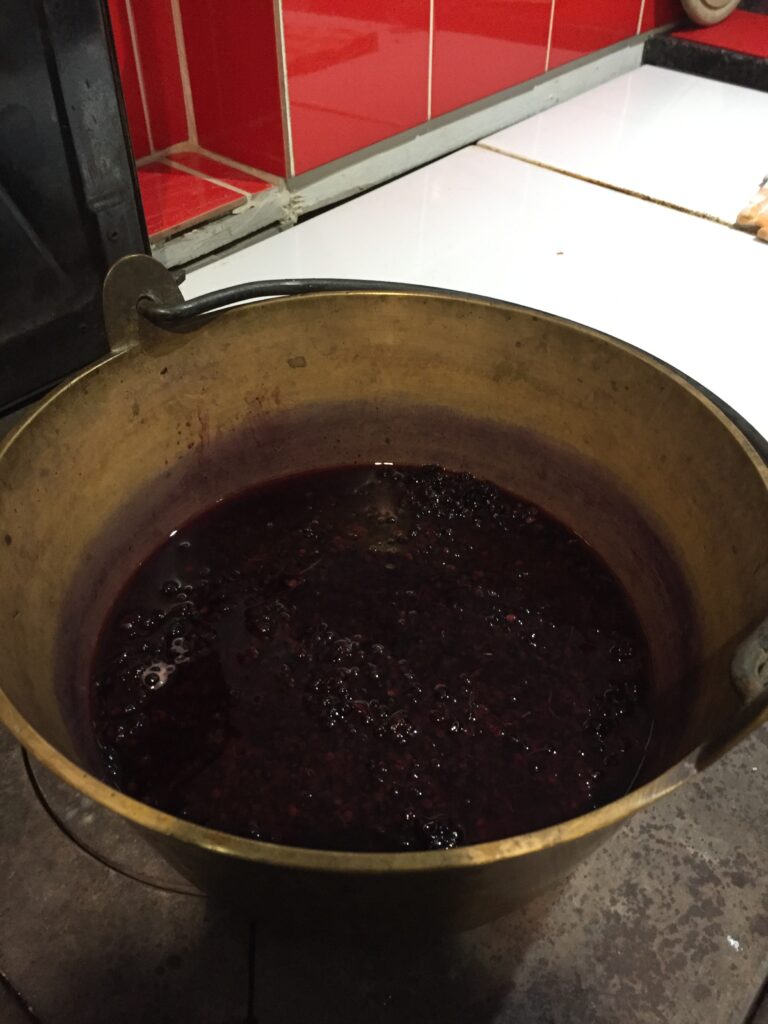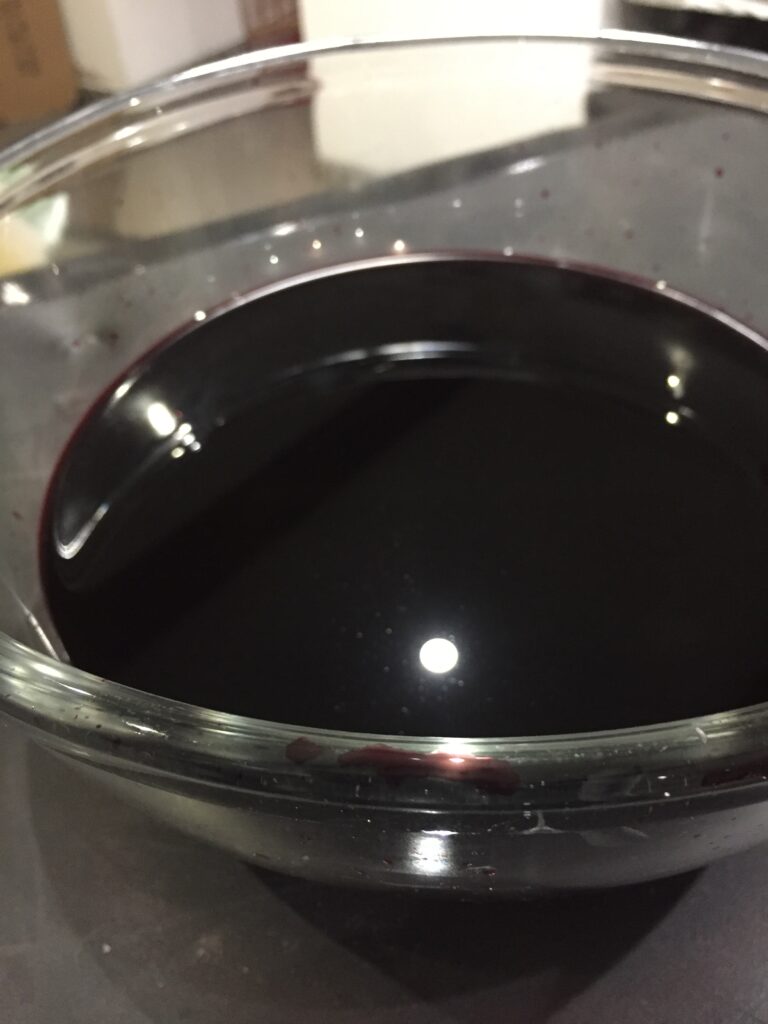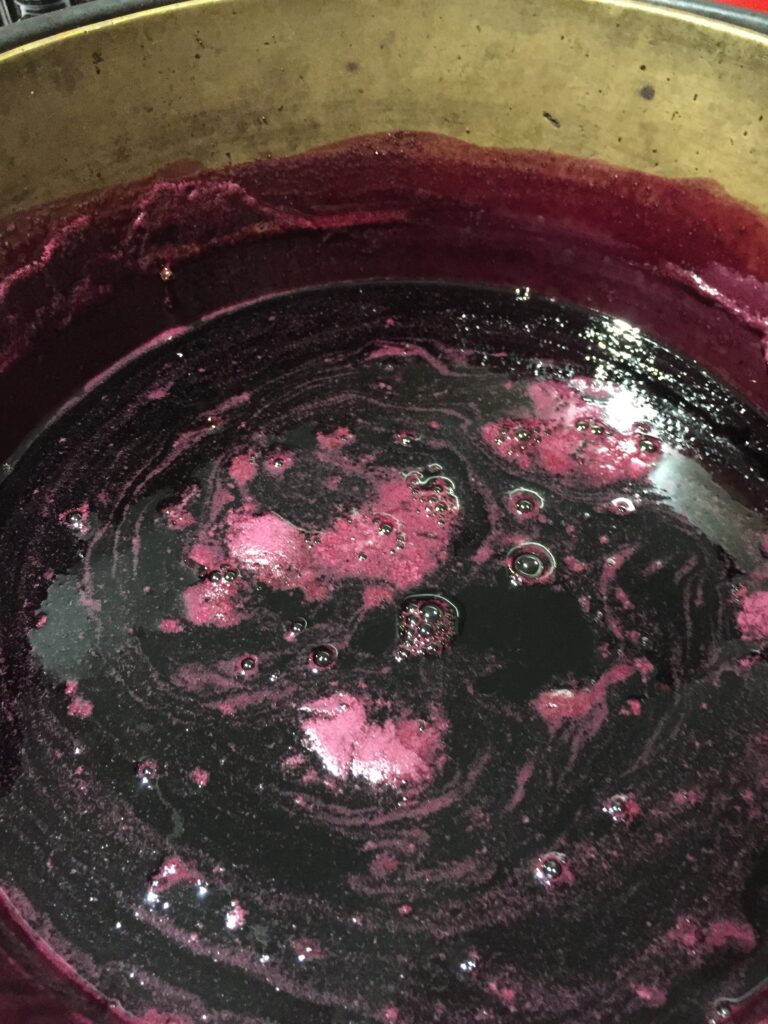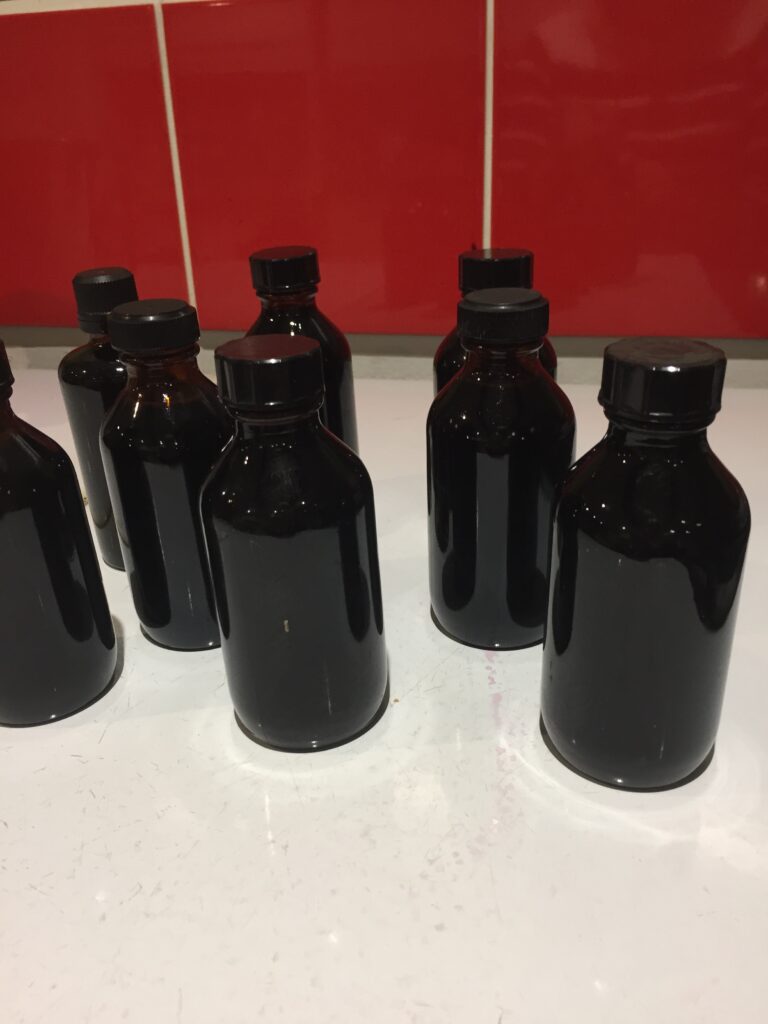According to Mrs. Grieve in ‘A Modern Herbal’ (which is my bible when it comes to finding out about plants and their traditional uses), the Elderberry tree (Sambucus Nigra) is a medicine chest in itself. There are many fascinating legends and folklore associated with it, one of which I have adopted over the years. I always treat this fabulous tree with great respect and thank it every time it yields its fruit or flowers to me. Many country folk in bygone days would greet the Elder tree when passing, as they revered it so greatly.
Over two decades ago I bought another fabulous book called ‘Wild Food’ by Roger Philips. The two books work very well together. Mrs Grieve gives all the old knowledge and Roger Philips includes brilliant photography to enable easy identification. It is an excellent guide to foraging with good recipes. My favourite recipe (used time and time again) is Elderberry syrup. I’ve given it to lots of people who have used it to help relieve winter coughs, and in fact he states in the book that it has been used since Tudor times as a cough remedy.* It uses vast amounts of sugar, but (as I learnt to my cost this year when using less sugar in my elderflower cordial) the sugar is necessary as a preservative.
In recent years, the local birds have beaten me to the elderberries and my supplies were getting way beyond an acceptable ‘use by’ date…..seven years old in fact! So I was delighted when one of my neighbours offered me the pickings from their tree. I don’t know about you, but there is something really satisfying about picking from the hedgerows. It seems to tap into a deep and ancient time from our hunter gatherer days, that feeling of resonating with our environment and taking the time to just ‘be’ and enjoy the finding of dark purple treasure!
The ideal time to gather is on a dry sunny day; the day I picked, it was dry but mainly cloudy.

After cutting each bunch of purple berries from the stem and collecting them in a carrier bag, I headed home for the processing. This bit can be tedious, but if you can organise a sunny day to do it outside, then it is much better. Also the dark red juice doesn’t stain grass like it does on the kitchen floor or even worse a carpet…
The berries need to be stripped from the stalks, discarding any that are not ripe enough (picked when the occasional beam of sunlight was in my eyes, I couldn’t see what colour they were).

The discarded stalks even have a beauty of their own…

The next stage is to rinse them over and cover them with a layer of water, and sit on the stove.

After reaching boiling point, reduce the heat and simmer for quite a while- the smell isn’t massively appetising! Eventually the berries will be mashable and the level of water reduced.
Then scoop the berries and the juice into a jelly bag. Mine is ancient and has seen years of jelly making but is still going strong. A quick search on the internet will find you one- cloth ones are best as they are more ecological and last longer. You can even make your own if you are so inclined. Muslin is the level of weave you want- it needs to be fine enough to filter all the mush from the berries out. I tend to hang the bag from a hook and let it drip overnight into a bowl. The result is a beautiful deep purple juice.

The next stage is to measure how much juice there is and add 450g of sugar and 10 cloves for every 600ml of juice back into the jam pan. Then I heat that up gently to boiling point and boil for 10 minutes.

Meanwhile I sterilise the jars by washing them thoroughly in soap and water, rinsing them, then placing in the oven to dry off. Using an oven proof cloth, I lift them very carefully from the oven and onto a heatproof surface.
After 10 minutes of boiling the juice I cool it a little before pouring into sterilised jars. I remove some of the cloves as I do so. However, I inevitably miss some, so I warn anyone I gift it to, that they need to look out for them and remove before use. Then I label the jars with the date I made it.

Elderberry syrup can be used in lots of different ways. It can be dribbled over vanilla ice cream, stirred into plain yoghurt or diluted in hot water like a cordial drink. I have found it extremely comforting on a cold winter’s day with a sore chest, especially when adding a slice of lemon. (Occasionally I might add the odd shot of whisky -for purely medicinal reasons of course!)
*This information is purely for interest, any use of this as a medicine needs to be taken under the instruction and guidance of a registered herbal practitioner.
Medical disclaimer
This post is not intended to provide diagnosis, treatment or medical advice. Any mention of medicinal uses are for informational purposes only. The use of any herb or derivative is entirely at the reader’s own risk. The author of this post cannot be held liable for anyone using these medicines. It is strongly advised that any usage is in consultation with a registered herbalist and/or qualified doctor.
« Back to blog page